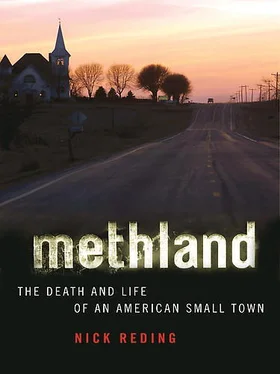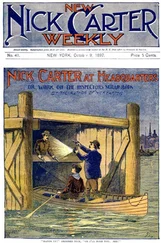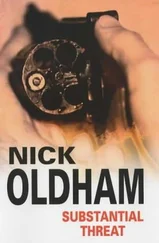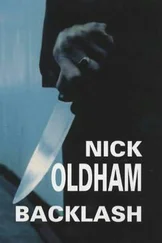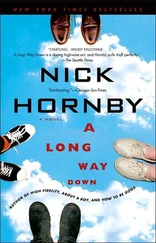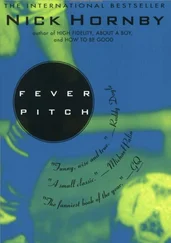Nathan’s response was that, no matter how interested and nice his parents seemed now, they would eventually turn on Jamie. That’s what they’d done his whole life, he said: lured women in, only to then become so critical that it ended up ruining Nathan’s relationship. Because he cared about his relationship with Jamie more than any other, he wouldn’t let that happen this time. He’d finally learned his lesson, he said, and had no interest in subjecting Jamie to his parents’ scrutiny. And so until something happened—what that something would be Nathan couldn’t say—he and Jamie would have to keep their living arrangements a secret from his parents, and Jamie would not accompany him to the farm.
As far as Nathan was concerned, this represented a genuine coup in his love life. He was in love, even if he couldn’t say it to Jamie. He was living with her and happy with her and his parents were not angrily shunning him. Eventually, the situation began to feel pretty natural to Jamie. Her training in psychology made her more sympathetic than most people might have been to Nathan’s plight, and she was genuinely able to help him. That in turn made Jamie feel needed in a time when she had to work in a bar in Strawberry Point. Her family loved Nathan, and they weren’t any the wiser when, on holidays, Nathan went alone to his parents’, then came home in the afternoon or the evening to have a second Thanksgiving or Christmas meal with Jamie and her parents. For Nathan, it was as good as it was likely to get, for things with the girl were splendid. Problem solved.
Around the time that Nathan’s brother died, Clay Hallberg entered a rocky period in his life. One night, Clay played a gig at a bar called the Eagle’s Roost, in Hazleton, Iowa, just five miles south of Oelwein. As usual, much of Clay’s compensation had come in the form of beer. After a couple of rowdy encores, Clay had sat around with the bar’s owner, an old friend from the better times of the 1970s, and drank until closing time, before loading his equipment into his Toyota Highlander and heading home. Knowing he was drunk, Clay skirted town, instead taking South Frederick north, past the Country Cottage Café and Lake Oelwein, before hanging a left on Tenth Street SW. When he got to his street, Q Avenue, he knew he was safe, for Q Avenue is nothing more than a farm road that was graded back when the prairie was divvied up into quarter sections. But after driving a few hundred yards, Clay fell asleep. He missed the right-hand turn into his long gravel driveway, jumped the irrigation ditch, and T-boned the fence. His truck, with significant damage, came to a clattering stop in his cornfield.
The real wake-up call for Clay, though, came at the end of 2005, just a week before the two-year anniversary of his mother’s death. Again, he’d been down in Hazleton, playing a gig. And again he had stayed too late and driven home drunk. Only this time, an Oelwein cop pulled him over just north of the Fayette County line. Clay had been smoldering for two years about what he saw as the complicity of the Oelwein police in the death of his elderly mother. She’d been complaining to the Cop Shop for months about an Amishman whose Clydesdale was always wandering onto Highway 150 in the evenings, thanks to a hole in the Amishman’s fence. But the police had ignored her pleas. That was the very horse that, startled by her headlights as she drove home late one cold winter night, bolted onto the road. The collision killed her, totaling her car and throwing it into the ditch out of which the horse darted.
Clay was also boiling mad over police treatment of a young meth addict in town, Alan Coffman. Clay and Tammy had all but adopted Alan, who was best friends with their son back when he was a kid because Alan’s parents were never around. Now twenty, Alan had landed a good job as a welder in town. He’d started doing meth, and after an arrest had been compelled to become a confidential informant by the Oelwein police. Alan had to wear a wire each night and make the rounds of the Oelwein bars, trying to make deals with people on the police list of most wanted meth manufacturers while the cops listened. Many of these dealers and batchers were Alan’s friends, and would kill him, he said, should they find out about the wire. If Alan could help the cops get convictions, the charges against him would be dropped. If not, he’d go to jail. It was all part of Oelwein’s new hard-line stance on meth. Clay thought this was a gross infringement of civil rights, though he reserved his disdain for the police rather than aim it at his friends Murphy and Nathan.
So when Clay was pulled over while driving drunk on his way home from Hazleton, he unleashed a year’s worth of frustration at once in the form of an expletive-laced tirade. The incident didn’t end well for Clay, who claims that the officer assaulted him verbally and threatened him physically. In retrospect, Clay says, getting pulled over amounted to a kind of breakdown for him, unleashing aggression and animosity that had been building for several years. Things in Oelwein weren’t good. Things at the hospital weren’t good. His twin brother had moved to Cedar Rapids, his mother was dead, and his kids were grown and out of the house. Insurance rates were making it harder to practice medicine, and the bud get cuts the hospital was facing made it harder to get the most basic supplies Clay needed to do his job. In order to make money, he couldn’t be the old-fashioned doctor that he’d once been, and that his father had been for fifty years. That’s to say, Clay couldn’t take his time with people; he had about fifteen minutes to listen to and diagnose each patient. Dr. Clay couldn’t solve everyone’s problems in fifteen minutes. And it was killing him.
As a result of the drunk-driving incident, Clay was charged and pleaded no contest to operating a vehicle while intoxicated. The county installed an Intoxilock on his truck, which consists of a long tube attached to a breath-analysis machine on the steering column. Clay had to breath into the Intoxilock, registering less than an illegal amount of alcohol on his breath, in order to start his truck. He also had to attend substance-abuse meetings. For these, he chose an Alcoholics Anonymous group in Iowa City, a two-hour drive southwest of Oelwein. It was these meetings, which he went to once a week in the relative anonymity afforded by Iowa’s largest city, which had begun to mold Clay into a new man by May of 2006.
I went to Oelwein for two weeks in the spring of 2006 to spend time with Clay, Nathan, Jarvis, and Murphy, and also to In dependence to visit Major and his son Buck. Phase II of Oelwein’s refurbishment was under way. The streets had been torn up, and the new sewer lines had been marked in the dirt with wooden stakes topped with bright pieces of orange ribbon. The mood around town was expectant, though there was a good deal of crankiness and doubt, if not outright cynicism, concerning the notion that so much money had been spent in order, it was hoped, for Oelwein to lure businesses. After all, when was the next time Oelwein would be able to come up with money for anything, never mind the ten million dollars Murphy and the city council had raised in order to complete the refurbishments? Slowed by excessive spring rains, these improvements were nowhere visible. Indeed, much of Main Street appeared to have been razed by an invading army. The questions were obvious: What if Murphy was wrong? What if he’d gotten people on board, via tax hikes and referendums and bond issuances, only to invest that money poorly? What the hell was Oelwein going to do then?
One night, just as I’d done the year before, I joined Clay at a party. Only this time, it wasn’t a Fourth of July shindig at Clay’s house; it was a Saturday-night hoedown at a neighbor’s farm. A few dozen people had decided to get together in a barn and eat from an enormous table covered in the usual potluck delicacies, which, for all their varying applications, traced their origins to two sources: pig and potato. Soon people would start dancing in the dust and the dirt and the hay chaff, once they finished their smokes and beers. Clay was set to go onstage—this time without Charlie. That in itself was a development, a sign of progress, as though Clay were growing more independent, not just of his twin but also of his old self. For now, he sat at a picnic table drinking Diet Coke. Not surprisingly, he was talking about the reformulation of his life in terms of the Whorfian hypothesis, one of his favorite theories, which he sketched by drawing a number of concentric circles on the back of a paper plate.
Читать дальше
